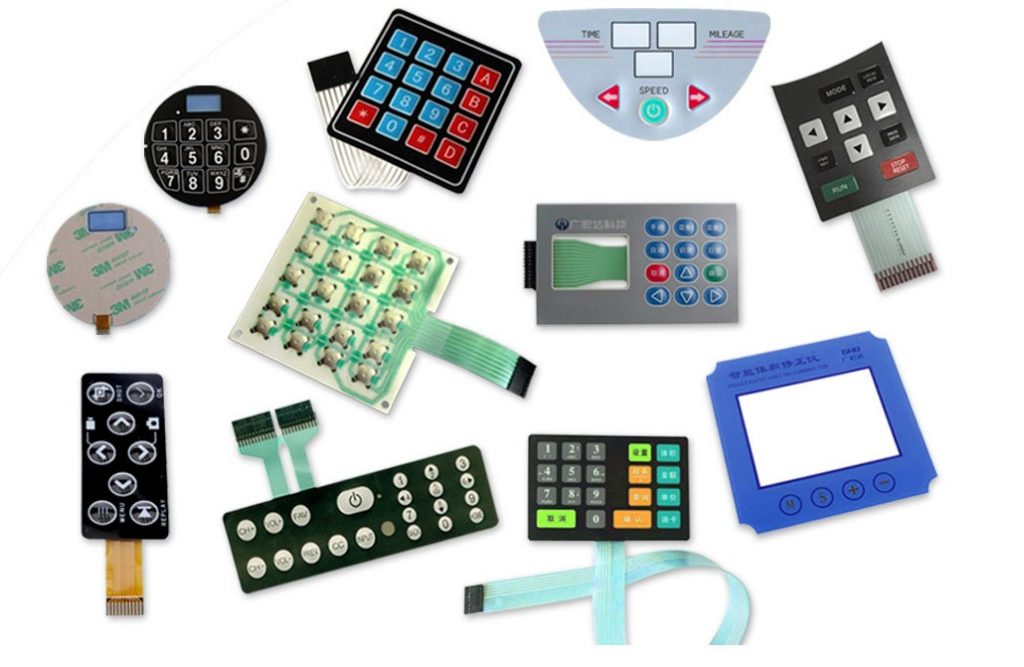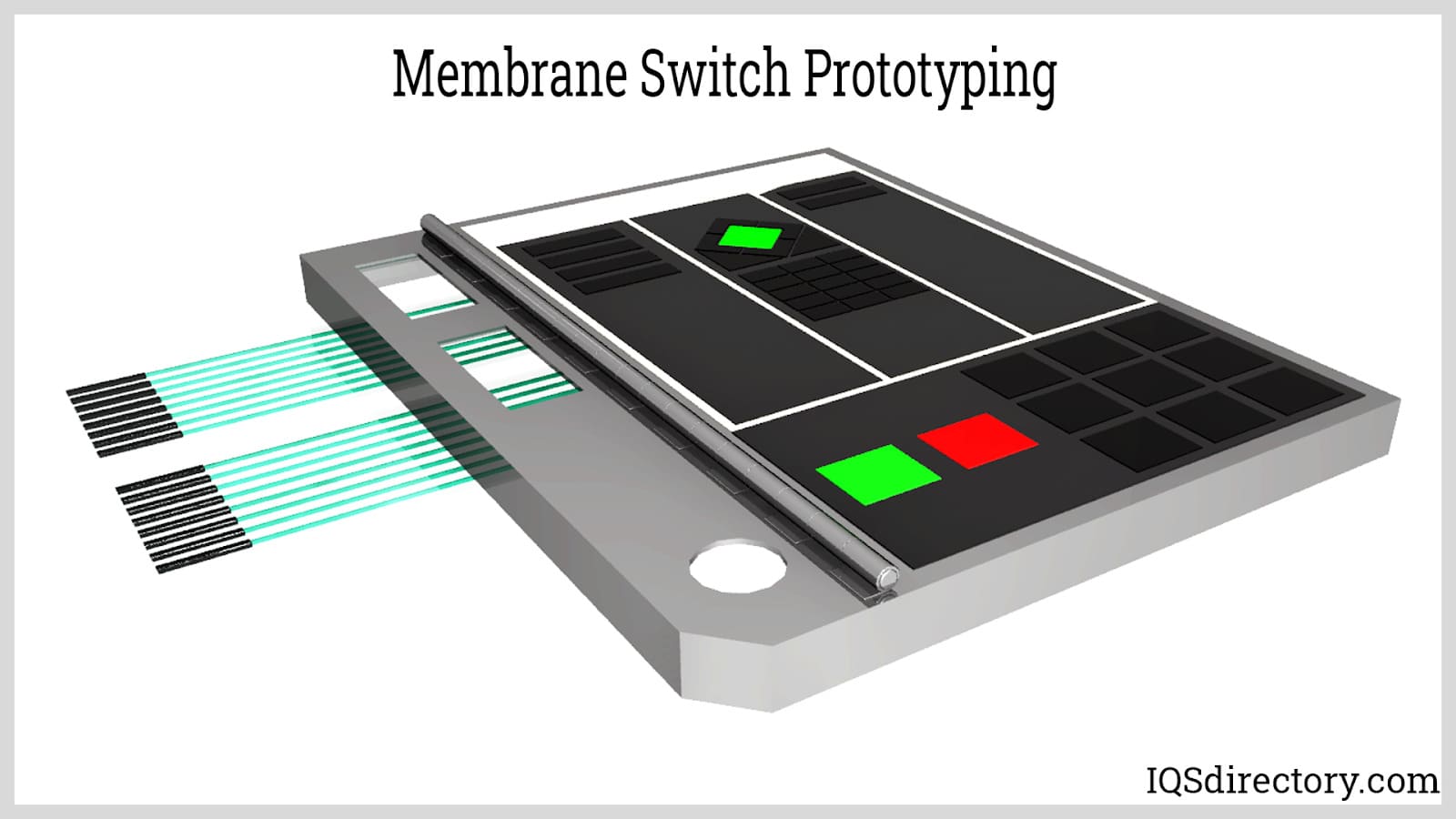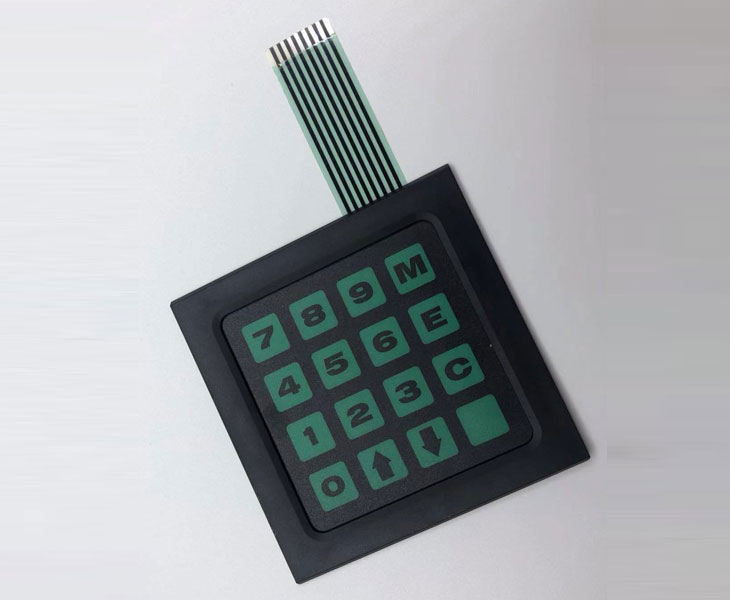Membrane switch in digital appliances: manufacturing considerations
Wiki Article
The Manufacturing Process Behind Membrane Layer Change: What You Required to Know
The production process behind membrane switches over combines cautious design, product option, and high quality control. It begins with understanding the complexities of membrane layer button design and proceeds via numerous phases, including material choices and printing strategies. Each phase plays a crucial duty in ensuring performance and resilience. Nevertheless, the complexities of layer construction and the strenuous testing criteria may reveal insights that are not promptly evident. What exists beyond these fundamental aspects?Comprehending Membrane Layer Switch Over Style
Membrane switches may appear straightforward at very first glimpse, their design entails elaborate considerations that guarantee functionality and longevity. The layout procedure begins with an extensive understanding of customer requirements, consisting of the user interface's intended application and ecological aspects. Comfort designs is a key aspect, as the format has to facilitate convenience of use while making certain that responsive feedback satisfies user expectations.Moreover, the layering of parts, such as visuals overlays, adhesive layers, and conductive traces, have to be exactly crafted. membrane switch. This split configuration not only affects the button's responsiveness however likewise impacts its long life. Attention is offered to the securing methods employed to secure against wetness and dirt, which could jeopardize performance. Additionally, design considerations encompass aesthetics, where color design and aesthetic clarity improve user experience. Eventually, the design of membrane changes balances capability, customer experience, and durability, making sure that they meet the needs of various applications properlyMaterials Used in Membrane Switch Production
When selecting materials for membrane layer switch manufacturing, it is necessary to ponder both efficiency and resilience. The primary products include polyester and polycarbonate films, which provide adaptability and toughness. These movies are usually covered with sticky to assure appropriate bonding to substrates. Conductive inks, normally made up of silver or carbon, are critical for creating electrical connections within the button, enabling trustworthy operation.Additionally, a safety layer, such as a hard coat, is regularly put on improve scratch resistance and longevity. The choice of backing material, such as acrylic or foam, can considerably affect the switch's responsive feeling and total customer experience. Various environmental elements, consisting of temperature and moisture, need to guide material selection to guarantee peak performance in certain applications. Inevitably, the right combination of materials adds to the membrane button's functionality and life expectancy, making educated selections important for suppliers.The Printing Refine: Creating Video and Text
The printing process in membrane button production plays a substantial role in producing top quality graphics and text. Various visuals layout techniques are employed to ensure aesthetic charm and performance, while cautious ink option techniques are vital for toughness and performance. Comprehending these aspects is basic for accomplishing finest lead to membrane button layout.Graphic Style Techniques
Graphic design methods play an important duty in the printing process of membrane buttons, as they define just how graphics and message will inevitably appear on the final item. Effective visuals layout includes the calculated usage of layouts, shades, and fonts to enhance readability and visual allure. Developers typically utilize vector graphics for scalability, ensuring that pictures continue to be sharp at various dimensions. In addition, interest to contrast and placement is important, as it influences customer communication and aesthetic top quality. The consolidation of branding aspects, such as logos, must be taken care of with like preserve brand name integrity. In general, thoughtful graphic layout methods contribute significantly to the performance and good looks of membrane switches, influencing customer experience and item efficiency.Ink Selection Techniques
Selecting the ideal ink is vital for attaining the desired aesthetic high quality and toughness in membrane button manufacturing. Numerous ink kinds are made use of, including solvent-based, water-based, and UV-curable inks. Each type provides distinctive attributes, such as attachment, flexibility, and resistance to ecological variables. Solvent-based inks are frequently preferred for their toughness and lively shades, while water-based inks are much more environmentally friendly yet might have limitations in attachment. UV-curable inks provide rapid treating and robust performance. Furthermore, shade matching methods ensure that the picked inks straighten with style specs. Ultimately, the choice of ink should take into consideration factors such as application method, substratum compatibility, and end-use needs to attain exceptional cause membrane switch graphics and message.Layer Construction and Setting Up

Material Selection Refine
A cautious option of materials is essential in the manufacturing process of membrane buttons, as it directly influences capability and durability. The primary products made use of consist of polyester, polycarbonate, and different conductive inks. Polyester is typically preferred for its exceptional resistance to chemicals and abrasion, making it appropriate for rough environments. Polycarbonate, on the various other hand, supplies remarkable clarity and influence resistance, which is beneficial for applications requiring visibility and robustness. Conductive inks, typically made up of silver or carbon, are important for developing reliable electric paths. In addition, the option of glue products influences the overall stability of the switch - membrane switch. Examining factors such as ecological direct exposure, tactile comments, and aesthetic demands overviews suppliers in selecting the very best products for their particular applicationsLayer Bond Strategies
Sticking layers in membrane layer switch building and construction is a crucial process that ensures performance and durability. Numerous attachment methods are utilized to protect ideal bonding you can try this out between layers, which usually include making use of adhesives, warmth, and stress. Pressure-sensitive adhesives (PSAs) are typically used for their simplicity of application and immediate bonding abilities. Furthermore, thermal bonding techniques can be applied, where warm is used to activate sticky properties, protecting a strong bond. The selection of bond method mainly depends on the products involved and the specific application demands of the membrane layer button. Correct positioning and uniform application of adhesives are important to prevent defects, protecting the button operates successfully throughout its intended life expectancy.Quality Assurance Measures
Ensuring quality assurance during the layer construction and setting up of membrane buttons is vital for maintaining efficiency and dependability. This process generally involves a number of essential actions, consisting of extensive evaluations at each phase of production. Manufacturers make use of innovative testing methods, such as peel examinations and adhesion assessments, to verify the stability of layer bonds. In addition, visual assessments are performed to recognize any kind of flaws in printing or material inconsistencies. Environmental conditions, such as temperature level and moisture, are thoroughly monitored to assure perfect curing and adhesion. Routine calibration of tools helps preserve accurate manufacturing criteria. By executing these quality assurance measures, producers can substantially minimize the risk of item failing, ensuring that the last membrane switches over satisfy the required specifications and customer assumptions.Evaluating and Quality Assurance Steps

Developments in Membrane Layer Switch Technology
As developments in modern technology remain to develop, membrane layer switches are gaining from ingenious advancements that improve their capability and individual experience. One noteworthy advancement is the integration of capacitive touch technology, which allows for even more intuitive and responsive individual interfaces. This shift not just improves aesthetic appeals yet also minimizes mechanical wear and tear, prolonging the life expectancy of the switches.Additionally, improvements in graphic overlay products have actually resulted in enhanced toughness and resistance to ecological factors such as dampness and UV light. These materials currently offer improved clarity and brightness, additional boosting the visual appeal.Furthermore, the incorporation of clever innovation is changing membrane layer switches over into interactive control board, enabling connectivity with IoT gadgets. This connectivity promotes a smooth user experience, paving the method for applications in numerous sectors, from health care to customer electronics. Collectively, these advancements placement membrane switches as essential elements in contemporary device style.Regularly Asked Concerns
How much time Does the Membrane Layer Change Production Process Take?
The duration of the membrane button manufacturing process can vary substantially. Variables such as complexity, materials used, and production volume influence timelines, with common manufacturing ranging from a few days to numerous weeks for conclusion.What Are the Usual Applications for Membrane Switches?
Membrane buttons are frequently utilized in different markets, consisting of vehicle controls, household appliances, clinical tools, and consumer electronics (membrane switch). Their adaptability and durability make them ideal for applications requiring straightforward interfaces and trustworthy efficiency in diverse settingsCan Membrane Switches Be Customized for Certain Requirements?

What Is the Lifespan of a Normal Membrane Layer Change?
The lifespan of a common membrane button varies, however usually, it ranges from 1 to 5 million cycles. Aspects such as use, setting, and worldly top quality substantially affect sturdiness and overall efficiency with time.

Are Membrane Changes Ecologically Friendly?
The ecological friendliness of membrane layer switches varies. Some products utilized may not be recyclable, while others can be green. The general impact relies on making techniques and products, requiring careful consideration throughout option and disposal. The manufacturing procedure behind membrane switches over combines mindful style, product option, and quality control. It starts with understanding the ins and outs of membrane layer button style and proceeds webpage through different stages, consisting of material selections and printing methods. When selecting products for membrane layer switch manufacturing, it is vital to ponder both efficiency and toughness. A mindful selection of products is vital in the production process of membrane switches, as it straight influences performance and resilience. The selection of adhesion technique largely depends More Info on the products entailed and the specific application needs of the membrane layer switch.Report this wiki page